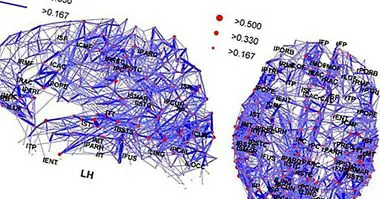Schizophreniform disorder: symptoms, causes and treatment
Schizophrenia is a widely known mental disorder, considered to be the most representative of all psychotic disorders.
However, within these we find other disorders that resemble to a lesser or greater extent, such as schizoaffective disorder, chronic delusional disorder or the disorder that occupies us in this article: the schizophreniform disorder.
What is schizophreniform disorder?
The diagnosis of schizophreniform disorders is made in all those cases in which there are at least hallucinations, delusions and / or altered speech and disorganized for more than a month but less than six. However, in some cases it is not clear if it is a schizophreniform disorder or any other type of mental disorder of the psychotic spectrum. The dividing lines between these concepts are diffuse, and can provoke debate; mainly, these definitions serve as a reference to guide in the clinical field.
symptom
It is not uncommon for them to show an increase in activity and impulsivity, acting in a chaotic way, and a variable level of disconnection with reality. There may also be catatonia or negative symptoms such as abulia or bradypsychia. The onset of these symptoms tends to be sudden and acute, as well as their subsequent disappearance.
Differences with schizophrenia
This brief definition can remind us of schizophrenia, which is mainly differentiated by the time window in which it appears (from one to six months, requiring a diagnosis of schizophrenia at least six and acute psychotic disorder less than a month) and by the fact that it does not usually leave sequels or produce deterioration (unless it ends up leading to another disorder). That is why it tends to have a much better prognosis than this one.
Frequently, when the diagnosis is made, if the problem has not already subsided, the schizophreniform disorder is considered as a provisional diagnosis until it is determined whether it ceases before six months or it can be considered schizophrenia. In fact, at the time some authors proposed that this diagnostic label could actually be encompassing those subjects with resolved and successfully treated schizophrenia.
One third of patients achieve a complete recovery, without presenting more symptoms and sequelae . However, in the remaining two thirds the schizophreniform disorder may end up evolving towards schizophrenia or schizoaffective disorder, especially when it is not treated (although it must be borne in mind that the phenomenon explained in the previous paragraph also influences this). It can also turn to a schizotypal personality disorder.
Causes of this disorder
The etiology (the causes) of this disorder is not completely known, considering different hypotheses in this respect that coincide to a large extent with those of other psychotic disorders such as schizophrenia.
It has been observed the existence of correlations that suggest that at least part of the subjects with this disorder have inherited genetic alterations, being frequent that some family member present alterations of mood or schizophrenia. The experience of traumatic situations on the part of someone with genetic vulnerability can trigger the beginning of the disorder, as well as the consumption of substances.
At the brain level, it is observed, as in schizophrenia, that alterations in the dopaminergic pathways may arise, specifically in mesolimbic and mesocortical . In the first one there would be a dopaminergic hyperexcitation that would cause positive symptoms such as hallucinations, and in the mesocortical a hypoactivation due to the lack of sufficient levels of that hormone that would generate apathy and other negative symptoms. However, although schizophrenia has a generally chronic course in schizophreniform disorder, the symptoms end up remitting with treatment or even in some cases by themselves, so that the alteration in these systems could be temporary.
Good prognosis factors
The various studies carried out with respect to schizophreniform disorder highlight the existence of some factors that tend to be linked to a good prognosis .
Among them, they emphasize that there was a good premorbid adjustment (that is, that the subject did not present difficulties prior to the outbreak and was well integrated socio-labor), that feelings of confusion or strangeness appear among the symptoms, that the positive psychotic symptoms begin within the four first weeks after the first changes appear and no affective dullness or other negative symptoms are present.
This does not mean that those who do not have these characteristics necessarily have a worse future, but that those who have them will have a harder time as the disorder evolves.
Treatment
The treatment to be applied in cases of schizophreniform disorder is practically identical to that of schizophrenia. What has been shown to be most effective in combating this disorder is the combined use of pharmacological and psychological therapy, the prognosis being better the earlier the mixed treatment starts.
Below we review some of the most common and scientifically endorsed ways to treat schizophreniform disorder.
1. Pharmacological
A pharmacological level is prescribed the administration of neuroleptics in order to combat the positive symptoms , usually recommending the use of atypical due to its lower side effects.
This treatment is performed both to initially stabilize the patient in the acute phase and subsequently to it. A maintenance dose is usually required less than in schizophrenia, as well as less time of it. In cases of risk of causing damage or self-injury, hospitalization may be necessary until the patient stabilizes.
However, administering drugs (always under medical indication) and trusting that they work is not a good idea; you have to monitor its effects constantly and assess their side effects in patients .
2. Psychological
On a psychological level, the treatment will be carried out once the patient has stabilized. Problems such as problem solving and training in coping skills, as well as psychosocial support, are useful. The presence of hallucinations and delusions can be treated by focusing therapy (if you hear voices) and techniques such as cognitive restructuring.
Keep in mind that after experiencing a psychotic outbreak excessive stimulation can be harmful initially , with which it is advised that the reincorporation to the daily life be gradual. In any case, social and community reinforcement is very useful for the improvement of the patient's condition, being fundamental to perform psychoeducation both with the affected person and with their environment.
Finally, it is necessary to take into account that a periodic follow-up of each case must be carried out in order to prevent the possible evolution towards another psychological or psychiatric disorder.
Bibliographic references:
- American Psychiatric Association. (2013). Diagnostic and Statistical Manual of Mental Disorders. Fifth edition. DSM-V. Masson, Barcelona.
- Gutiérrez, M.I .; Sánchez, M .; Trujillo, A .; Sánchez, L. (2012). Cognitive-behavioral therapy in acute psychoses. Rev.Asoc.Esp.Neuropsi. 31 (114); 225-245.
- Pérez-Egea, R .; Escartí, J.A .; Ramos-Quirga, I .; Corripio-Collado, J .; Pérez-Blanco, V .; Pérez-Sola, V. & Álvarez-Martínez, E. (2006). Schizophreniform disorder. Prospective study of 5 years of follow-up. Psiq. Biol. 13 (1); 1-7.
- Santos, J.L. ; García, L.I. ; Calderón, M.A. ; Sanz, L.J .; de los Ríos, P .; Left, S .; Román, P .; Hernangómez, L .; Navas, E .; Thief, A and Álvarez-Cienfuegos, L. (2012). Clinical psychology. CEDE Preparation Manual PIR, 02. CEDE. Madrid.



















